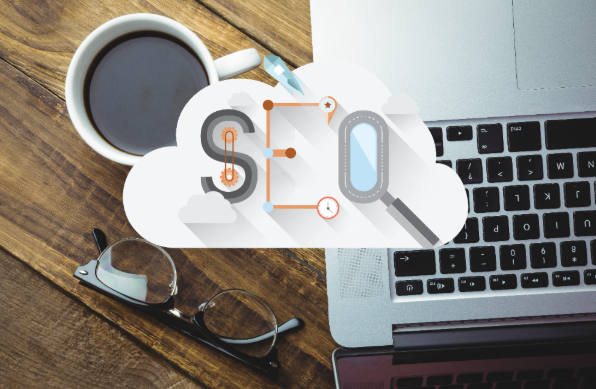Why Every Business Needs a Threat Intelligence Strategy in 2025

Cyber threats are evolving rapidly, and businesses can no longer afford to rely on outdated security measures. Hackers now use advanced techniques like ransomware-as-a-service (RaaS), AI-powered phishing, and supply chain compromise, targeting companies of all sizes and sectors.
In the past, many businesses treated cybersecurity as an afterthought—reacting only after an attack. But in 2025, that approach is obsolete. Cybercriminals operate with increasing speed and precision. A well-defined threat intelligence strategy is now essential for staying one step ahead.
This article explains why businesses need to adopt a proactive security approach, how threat intelligence helps, and what to look for in a modern threat intelligence solution.
1. Understanding Threat Intelligence and Its Growing Importance
Threat intelligence involves collecting, analyzing, and applying security data to anticipate and prevent cyberattacks. It enables businesses to understand adversaries, their tactics, and how best to defend against them.
Today’s cyber threats are more persistent, automated, and targeted. Attackers use AI, deepfake social engineering, and exploit zero-day vulnerabilities. Traditional security tools like firewalls and antivirus software are no longer sufficient on their own.
Modern threat intelligence offers:
-
Proactive threat hunting
-
Predictive analytics
-
Behavioral threat modeling
This proactive strategy enhances visibility, speeds up response times, and reduces damage. In 2025, it is the cornerstone of resilient cybersecurity operations.
2. Choosing the Right Threat Intelligence Solution
Selecting the right solution means looking beyond basic feeds or alerts. A robust platform in 2025 should offer:
-
Automated threat detection and mitigation
-
Seamless integration with SIEM, SOAR, EDR, and firewall systems
-
Real-time threat intelligence sharing across internal and external environments
-
Advanced risk scoring and prioritization of threats
-
Support for the MITRE ATT&CK framework and visual threat mapping
Cyware’s threat intelligence platform is a leading example. It empowers organizations with AI-assisted analysis, automated response workflows, geopolitical context for threats, and deep visibility into the dark web. Cyware helps reduce alert fatigue by minimizing false positives and enabling faster, more precise action.
For small to mid-sized businesses or those lacking dedicated security teams, Managed Threat Intelligence Services from providers like Cyware offer 24/7 monitoring, custom threat feeds, and actionable insights—ensuring round-the-clock protection without the need for in-house experts.
3. The Cost of Ignoring Threat Intelligence
Cyberattacks are more expensive than ever. The average global cost of a data breach in 2025 has crossed $5 million, with SMBs often facing closure after a major attack.
Ignoring threat intelligence results in:
-
Extended system downtime
-
Regulatory penalties under GDPR, HIPAA, or PCI-DSS
-
Reputational loss and customer churn
By contrast, companies that adopt threat intelligence strategies experience:
-
Up to 70% faster threat detection
-
40% reduction in incident response costs
-
Improved cyber insurance coverage eligibility
The cost of inaction now far outweighs the investment in proactive protection.
4. Key Benefits of a Threat Intelligence Strategy
Early Threat Detection
Advanced threat intel tools detect anomalies and suspicious behaviors before attackers strike—reducing dwell time from months to minutes.
Faster Incident Response
Threat intelligence platforms automate many response actions, such as blocking malicious domains or isolating compromised devices—minimizing impact.
Better Decision-Making
Data-driven insights from global threat trends allow organizations to allocate cybersecurity budgets more effectively and prioritize real threats.
Improved Collaboration and Threat Sharing
In 2025, industry-wide cooperation is key. Platforms like ISACs (Information Sharing and Analysis Centers) and Threat Intelligence Platforms (TIPs) allow businesses to contribute and consume critical threat data in real time.
Regulatory Compliance
Threat intelligence helps meet new 2025 compliance mandates like the NIS2 Directive in the EU or CISA guidelines in the US by documenting security posture and risk-based actions.
5. How Threat Intelligence Works in a Business Environment
A modern threat intelligence cycle includes:
Data Collection
Data is aggregated from:
-
Internal logs (EDR, NDR, IDS)
-
Global threat feeds (commercial and open source)
-
Dark web marketplaces
-
Malware sandboxes
-
IoT & OT telemetry
Analysis and Correlation
Machine learning and AI engines correlate patterns across data sources to identify trends and active threat campaigns. Indicators of compromise (IOCs) are automatically matched with internal assets.
Automated Response
Intelligence systems can:
-
Block malicious domains and IPs
-
Alert SOC teams
-
Quarantine endpoints
-
Trigger containment protocols via SOAR platforms
Continuous Updates
Real-time intelligence updates are crucial. Platforms update threat models and detection rules based on the latest TTPs (tactics, techniques, procedures) used by threat actors.
6. Future of Threat Intelligence: Trends to Watch in 2025
AI-Powered Threat Intelligence
Advanced AI models (including generative AI) are being used to predict threat actor behavior, detect novel attacks, and simulate breach scenarios for training purposes.
Discover how AI is improving mobile app security by enabling real-time threat detection and smarter user behavior analytics.
Automated Threat Response
More businesses now implement SOAR (Security Orchestration, Automation, and Response) to drastically reduce mean time to respond (MTTR) and remove human error.
Threat Intelligence Sharing Networks
Global collaboration via platforms like MISP, AlienVault OTX, and STIX/TAXII standards helps businesses stay ahead of emerging threats like nation-state cyber warfare.
Cloud Security Intelligence
As more workloads move to the cloud, tools like AWS GuardDuty, Microsoft Defender for Cloud, and Google Chronicle now offer integrated cloud-native threat intelligence.
Zero Trust Security Integration
Threat intelligence is now central to Zero Trust Architecture—validating user behavior, device health, and access requests dynamically to block insider and lateral threats.
Conclusion
Cyber threats are evolving—fast. Reactive security models leave businesses exposed. In contrast, a proactive, threat intelligence-led approach provides the visibility, context, and speed required to defend against modern attacks.
In 2025, investing in threat intelligence is not optional—it’s a necessity. Businesses that implement robust threat intelligence strategies will not only stay secure but also gain a competitive edge through compliance, resilience, and customer trust.

6 Tips To Unlock New Business Opportunities With My Aged Care Registration

The Hidden Business Power of Storytelling Through Books

Diamond Painting Apps & Digital Tools for 2025 Artists

Accelerating drug discovery through the DEL-ML-CS approach

AI in Marketing Is No Longer a Buzzword — It’s the Strategy

Benefits of Working with a Bathroom Remodeling SEO Company

The Full Guide To Penetration Testing

Pixel 10 Pro Fold Case: Why Choose Aramid Fiber?








